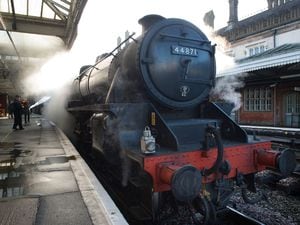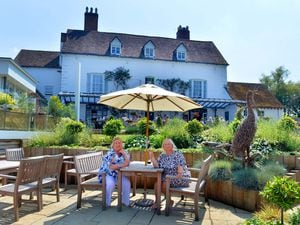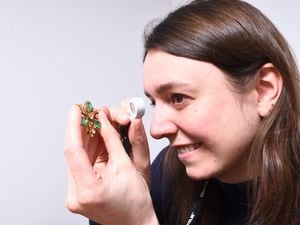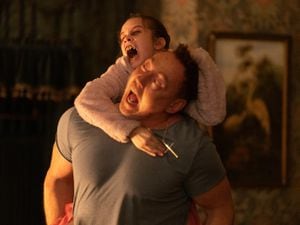Shropshire literary connections
Looking out over the wonderful countryside of Shropshire it's no surprise it has been the inspiration for a number of writers and poets. The scenic setting has seen some of the nation's greatest writers, such as Jane Austen and Charles Dickens use the patch as a symbol of isolation and tranquility.
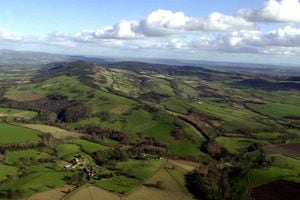
Catherine Cooper
Catherine Cooper, a children's author from Wellington, has been hailed as the next J.K. Rowling after her huge international success of the Jack Brenin fantasy adventure series. The first book of four in the series won the Brit Writers Awards 2010. She has taught primary school for 29 years and being a teacher, Catherine thinks she knows what kids like 'From my experience children love humour, a bit of magic and a good adventure. I love Shropshire; I think it's one of the loveliest counties in England. It is so rich in landscape, history, myths and legends. It has everything I could wish for to use as the setting for my Jack Brenin series.' She uses all real locations in her books and is one to watch, the movie rights have been given to Delve Film so we could see Jack Brenin come to life maybe in Shropshire.
Daniel Defoe
Most famous for writing 'Robinson Crusoe', Daniel Defoe was very well travelled. In his book 'Tour through the Whole Island of Great Britain' he includes comments about Whitchurch and Shrewsbury.
Patrick Bronte
Father to the famous Bronte sisters, Reverend Patrick Bronte was said to have been curator at All Saints Church in Wellington. Here he wrote two large volumes of poetry probably inspired by his surroundings.
Charles Dickens
Charles Dickens visited Shropshire a number of times and wrote about the Lion Hotel, on Shrewsbury's Wyle Cop, and of the Roman City at Wroxeter. He drew names and places from his surroundings to use in his books regularly. Miss Havisham from 'Great Expectations' is said to have been based on Elizabeth Parker at Chetwynd Hall. You can also find Little Nell from 'The Old Curiosity Shop' buried in Tong churchyard if you look carefully.
A. E. Housman
The most closely associated writer in Shropshire, A. E. Housman, is best known for 'A Shropshire Lad'. Surprisingly when he wrote it he had never stepped in the county. The collection of 63 poems was inspired by the views of Shropshire's 'blue-remembered hills' from his home in Bromsgrove. He name-drops with little regard for accuracy. Literary pilgrims will never find 'the vane on Hughley steeple' it has a tower, and Housman was describing a different church anyway. However, this doesn't seem to matter because he describes the places with such romance. His ashes are buried near St Laurence's Church, Ludlow.
D H Lawrence
In his novel 'St Mawr', Lawrence refers to the Devil's Chair on the Stiperstones, which gives a sense of evil and foreboding. The site today gives people the chills and remains quite a wild and frightening place. According to legend, the rocks of the Devil's Chair were brought there by the Devil himself.
P G Wodehouse
'The nearest earthly place to paradise' is how Wodehouse describes Shropshire. He set Blandings Castle in our neck of the woods – at Weston Park to be precise, but he could equally have chosen Attingham, Hawkstone Hall, or Powis Castle. Wodehouse loved the area and said 'I rashly placed Blandings Castle in Shropshire because my happiest days as a boy were spent near Bridgnorth'. He is also known for his Jeeves and Wooster stories. He died in 1975 just weeks before he was knighted by Queen Elizabeth II. Although English, he is buried in the Remsenberg Cemetery in New York.
Mary Webb
Mary Webb grew up in Shropshire and used many of the towns she knew in her writing, with references to Bishop's Castle, Church Stretton, Craven Arms, Habberley, The Stiperstones, and Longmynd. She reflects her love for the county in her five novels. She was born near Shrewsbury in the village of Leighton and moved around a lot living in Much Wenlock, Pontesbury, Shrewsbury and Lyth Hill. When her novel 'Gone to Earth' was made into a film, the location the producers decided on was Much Wenlock. Webb said 'Shropshire is a county where the dignity and beauty of ancient things lingers long, and I have been fortunate …in being born and brought up in its magical atmosphere'. She has her own walk and car trail, which connects some of the places she uses in her books.
Wilfred Owen
One of the most famous war poets of the 20th century, Wilfred Owen was born in Oswestry and grew up in Shropshire. He saw action in the trenches as a soldier and was awarded the Military Cross. His remarkably vivid poetry tells of the horrors of war and trench warfare in WWI. Owen died a week before the Great War ended. Only five of his poems were published when he was alive, it wasn't until the 1960s Owen was noticed for his work and became a household name. He has his own memorial in the grounds of the Abbey at Shrewsbury, and Oswestry town green is named after him.
Ellis Peters
Ellis Peters, whose real name was Edith Pargeter is perhaps Shropshire's best known modern author; she lived in Telford and is famous for her collection of Medieval whodunits, 'The Chronicles of Brother Cadfael'. The first appearance of this monk at Shrewsbury Abbey was in 'A morbid taste for bones' (1977) and he mixed his herbs and unraveled mysteries in this atmospheric setting for a further nineteen novels. The books have initiated tours, tourist attractions and a television series. There is a memorial for her at Shrewsbury Abbey and The Times published a full obituary when she died in 1995.
By Jody Ball

